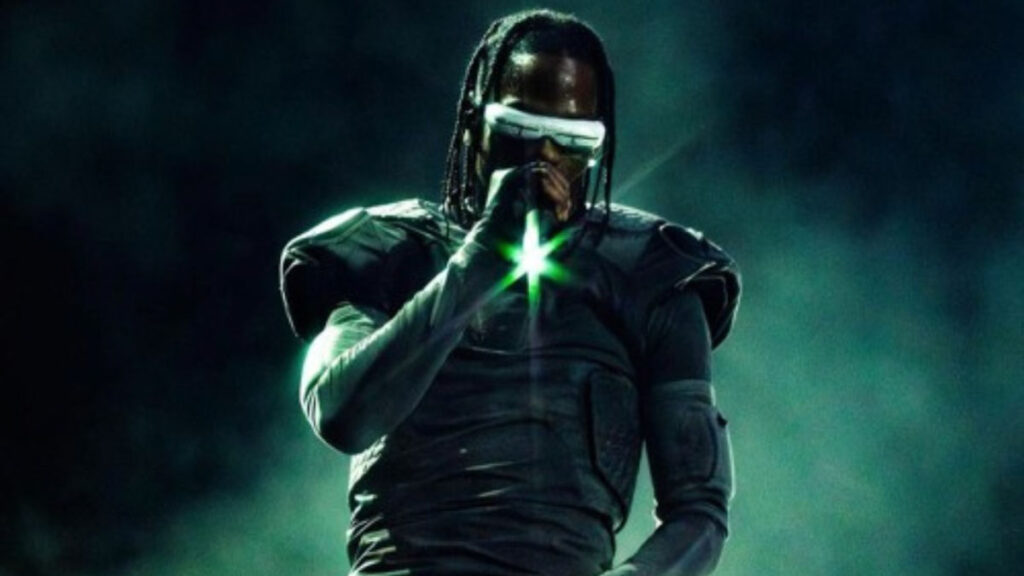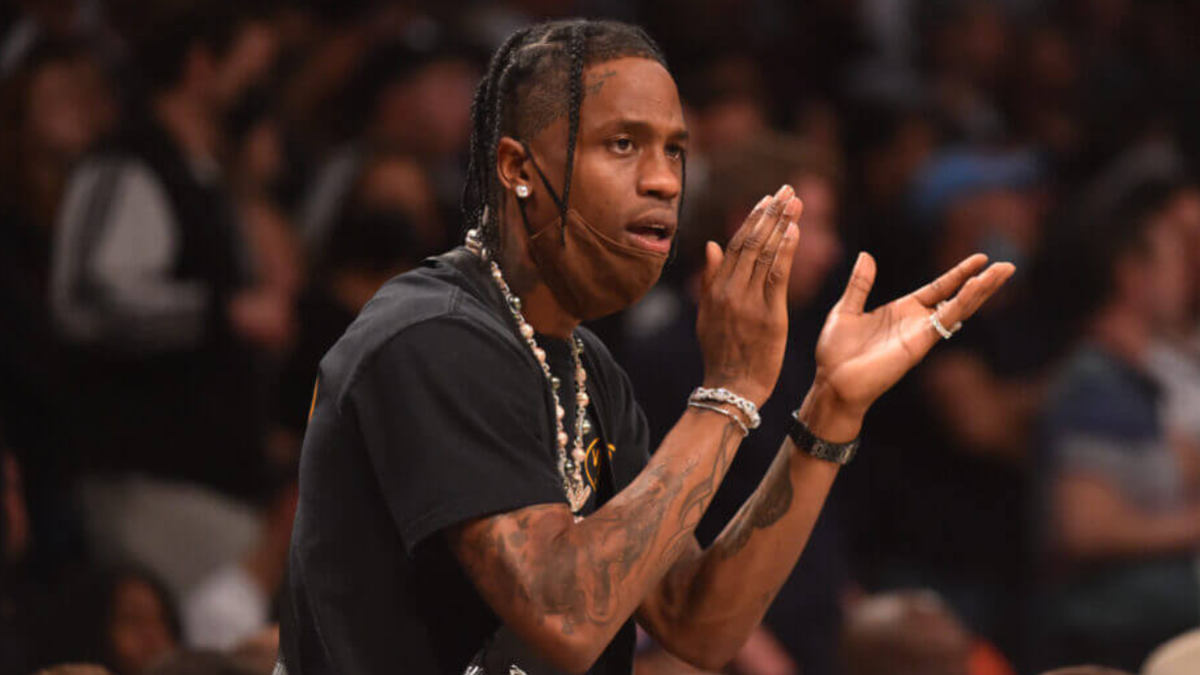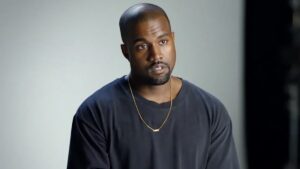It might’ve been a dimly lit dorm room, a cranked-up car stereo, or a chaotic festival stage — but almost everyone remembers the first time they heard Travis Scott. Not just the sound — distorted 808s, eerie auto-tune, and a rage-ready beat — but the feeling. A jolt of something untamed and cinematic. Travis Scott wasn’t following the rules of hip-hop — he was incinerating the playbook.
In an era where genre lines blur and brand is as important as bars, Scott has emerged as a rare force — a genre-defying artist who built an empire on chaos, control, and cultural clairvoyance. From underground SoundCloud drops to billion-dollar brand deals and VR concerts, his legacy is as disruptive as it is influential.
But his rise hasn’t been without controversy. The Astroworld tragedy cast a shadow over a career built on spectacle and sound. As fans and critics weigh artistry against accountability, one question remains: What does the legacy of Travis Scott represent — and where does it go from here?
“La Flame” Ignites: The Raw Origins on SoundCloud and Beyond
From Missouri City to Rodeo Dreams
Before the stadium tours and sneaker drops, Jacques Webster II was just a kid from Missouri City, a Houston suburb humming with contradictions — Southern hospitality wrapped in industrial grit. Raised in a household where jazz met church music, Travis soaked in sound early, but it was Houston’s underground that truly cracked open his artistic worldview. The slow, syrupy swirl of chopped and screwed remixes, pioneered by DJ Screw, didn’t just influence him — it embedded itself in his DNA.
At night, he obsessed over the atmospheric melancholy of Kid Cudi and the boundary-pushing genius of Kanye West, sketching beats in his bedroom while dreaming of something bigger than Texas. That tension — between local roots and global ambition — echoes through Owl Pharaoh and Days Before Rodeo, projects that fused psychedelia with raw emotion. For fans craving authenticity, Scott’s come-up matters. He didn’t just ride a wave; he warped it to his frequency.
Viral Hustle: How SoundCloud Launched a Storm
In the early 2010s, SoundCloud wasn’t just a platform — it was a revolution. A wild west for emerging artists who ditched industry gatekeepers in favor of raw uploads and rawer ambition. Among the noise, Travis Scott carved out a lane that didn’t sound like anyone else. His early mixtapes, especially Days Before Rodeo, felt more like cinematic fever dreams than rap records — eerie synths, distorted vocals, and chaotic drum patterns that flirted with punk energy and Southern trap.
Unlike other so-called SoundCloud rappers, Travis curated an aesthetic as aggressively as he curated sound. Gritty, dystopian visuals paired with cryptic social media posts created a mystique that invited curiosity. This wasn’t just a kid with a mic — this was a world-builder. Without a co-sign, without a label push, he built a cult following that felt organic and obsessive. Before fame found him, Travis had already made himself impossible to ignore.
Astroworld and the Alchemy of Sound, Vision, and Emotion
The Album That Defined an Era
Astroworld wasn’t just an album — it was a fully formed universe. Named after a defunct Houston amusement park, Travis Scott’s 2018 opus fused nostalgia with futurism, chaos with control. From the moment “STARGAZING” erupts, listeners are pulled into a psychedelic trap odyssey where every beat shift feels like a rollercoaster drop. This was album storytelling at its most immersive: an emotional ride through ego, escapism, excess, and existential haze.
The sound design was lush and disorienting, layering ambient textures with booming 808s and warped synths. Scott blurred genre lines, pulling in collaborators as diverse as Frank Ocean, Tame Impala, and Drake — not just for star power, but to deepen the mood and sonic architecture. Each track flowed into the next like dream sequences, anchored by themes of fame-induced isolation and the fading thrill of youth.
Fans and critics alike hailed Astroworld as a cultural artifact — proof that an artist could still build worlds in a playlist-driven era. It’s not just influential because of its hits — it’s influential because it felt like stepping into Travis Scott’s mind.
A Cultural Event, Not Just a Release
When Astroworld dropped, it didn’t just land — it detonated. More than a record, it was a carefully architected hip-hop spectacle that blurred the lines between music, fashion, and cultural mythmaking. Travis Scott didn’t just want fans to hear the album — he wanted them to live in it. From immersive listening parties to giant gold head statues popping up in cities worldwide, the rollout felt like a viral scavenger hunt. Branded merch drops — over 28 in total — became collector events, each one selling out in minutes.
The amusement park theme wasn’t a gimmick — it was an ethos. Pop-up shops resembled funhouses. Tour visuals featured roller coasters. Even the social media strategy mimicked thrill-ride suspense. Scott redefined album marketing by transforming the release into a lifestyle experience.
Despite Astroworld’s critical acclaim and cultural saturation, the GRAMMYs infamously overlooked it for Album of the Year. The snub exposed the widening gap between mainstream institutions and subcultural impact — a reminder that legacy isn’t always handed down from industry, but built from the ground up. Travis knew that. And he built Astroworld anyway.
The Brand is Bigger Than the Bars: Cactus Jack’s Global Empire
Business Moves with Artistic DNA
Travis Scott doesn’t treat business as a separate lane from creativity — he fuses the two until they’re indistinguishable. Cactus Jack Records isn’t just a label; it’s an extension of his artistic universe. From the eerie, genre-blurring sound of Don Toliver to the atmospheric production choices across the roster, Scott curates artists like he builds albums — with mood, edge, and intention.
The Astroworld Festival, too, feels less like a concert series and more like stepping into his imagination: surreal visuals, theme park motifs, and a lineup that mirrors his eclectic influences. Every brand extension — whether it’s a cereal box collab or a sneaker drop — carries his fingerprints, often blurring the line between product and performance.
What sets Travis apart is his consistency of vision. Fans don’t just buy in because it’s cool — they buy in because it feels like entering a world where every detail, from bassline to branding, has been designed to hit you in the chest and the imagination.
Collaborator or Cultural Architect?
Travis Scott’s brand partnerships aren’t just strategic — they’re seismic. The Travis Scott x Nike drops didn’t just move shoes; they redefined sneaker culture, merging streetwear hype with avant-garde design. His Fortnite concert wasn’t a gimmick — it was a pioneering moment in digital performance, watched live by over 12 million players and setting the blueprint for future virtual experiences. Even the McDonald’s collaboration, which turned a simple meal into a merchandising goldmine, became a case study in modern celebrity branding strategies.
What ties all these ventures together is intention. Scott doesn’t just attach his name — he injects creative direction, visual style, and cultural timing. The result? Viral moments that feel organic, not opportunistic. In an era where artists often chase trends, Travis makes them.
So the question isn’t whether he’s a successful collaborator. It’s whether he’s quietly becoming something more powerful: an artist-as-marketer, an architect of pop culture who bends corporate platforms to fit his world — not the other way around.
After the Tragedy: Reputation, Responsibility, and Rebuilding
Astroworld Festival 2021: The Night Everything Changed
On November 5, 2021, what was meant to be a celebration of music and community turned devastatingly tragic. During Travis Scott’s headlining performance at the Astroworld Festival in Houston, a massive crowd surge led to the deaths of 10 concertgoers and hundreds of injuries. The chaos unfolded in real-time — screams drowned by bass, pleas for help lost in the spectacle. The world watched as footage surfaced online, triggering a tidal wave of grief, outrage, and questions about music festival safety.
In the aftermath, conversations quickly turned toward Travis Scott’s responsibility. Some accused him of continuing his set amid visible distress; others pointed to deeper systemic failures in event planning, crowd control, and venue oversight. Lawsuits mounted. Brands distanced themselves.
But beyond the headlines, a deeper shift occurred: Astroworld was no longer just the name of an album — it became synonymous with tragedy. For fans, critics, and the industry alike, that night forced a reckoning. Travis’s legacy was no longer just about art — it now carried the weight of lives lost, and the question of what accountability in the spotlight should look like.
Legacy in Limbo? Navigating Public Perception
In the wake of the Astroworld tragedy, Travis Scott’s public image entered a state of suspended animation — not erased, but forever altered. His initial response was cautious: a somber video, statements of grief, and an offer to cover funeral costs. But for many, it felt distant, rehearsed, disconnected from the raw emotion of the moment. The backlash was swift. Brands paused collaborations, festivals dropped him from lineups, and the phrase “Travis Scott responsibility” dominated search trends.
Yet, not all turned away. A core of loyal fans clung tighter, interpreting silence as mourning, not indifference. When Utopia dropped nearly two years later, it wasn’t just an album — it was a reintroduction. Sonically darker, lyrically more self-aware, it hinted at reflection without direct reckoning. Was it redemption, or a redirection?
Travis now exists at the crossroads of cancel culture and cultural endurance. His artistry remains magnetic, but his legacy is no longer invincible. Whether time will heal or harden public opinion is still unclear — but what’s certain is that his narrative is now tethered to something far bigger than music.
Where Travis Stands Among His Contemporaries
Travis Scott’s place in hip-hop isn’t defined by lyrical prowess or radio dominance alone — it’s his ability to mold culture that sets him apart. When stacked against titans like Kanye West, Drake, Tyler, the Creator, and Playboi Carti, what emerges isn’t a hierarchy, but a constellation of influence, each artist occupying their gravitational field.
Kanye is the architect: a boundary-breaking visionary whose every move is art-meets-chaos. Drake is the pop alchemist, blending emotional transparency with mass-market appeal. Tyler, the Creator has become the avant-garde designer of the genre, turning irreverence into high fashion and musical growth. Carti, meanwhile, embodies the cult icon, with a sound and aesthetic that speaks directly to the internet-native generation.
Travis? He’s the immersive world-builder. His strength lies in collapsing music, merchandise, fashion, and tech into a singular aesthetic experience — a living universe that fans don’t just consume, but inhabit. From the Fortnite concert to Cactus Jack merch drops, his moves echo across industries.
In the landscape of rap innovators, Travis stands as a cultural icon not simply because of his sound, but because of how deeply he’s woven that sound into everyday life.
More Than Music: The Mythology of “La Flame”
Archetype of the Anti-Hero
Travis Scott doesn’t present himself as a polished role model — he leans into the mythos of the anti-hero, a figure driven by impulse, spectacle, and emotional volatility. His fans don’t just listen; they rage. At his shows, moshing becomes ritual, a physical release that feeds into his carefully constructed chaos. In this world, concert intensity isn’t a side effect — it’s the main event.

Unlike many of his peers, Travis avoids traditional interviews and press cycles, cultivating mystery and autonomy. He’s a figure in the shadows, letting visuals, merch, and music do the talking. This rebellion against industry norms feeds into his rap mythology, painting him as a postmodern icon — flawed, enigmatic, and defiantly unfiltered. For fans, that edge isn’t a liability — it’s the allure.
Symbolism, Aesthetics, and Cultural Lexicon
Travis Scott’s world is layered with symbols that go beyond branding — they’re icons in his mythology. The cactus represents resilience and roots in arid terrain, nodding to his label Cactus Jack and the rugged independence of his creative path. The flame, tied to his nickname “La Flame,” suggests both destruction and spectacle — a persona built on intensity and ignition.
Concepts like Utopia and dystopia run through his work, reflected in album art, stage design, and music videos that feel both hyperreal and post-apocalyptic. His fashion influence is just as potent — from baggy silhouettes to earthy tones and Nike collabs, Travis Scott’s fashion has redefined streetwear aesthetics. In slang, visuals, and vibe, his iconography has seeped into youth culture, making him not just an artist but a symbolic architect of a generation’s look and language.
I Was There: A Personal Reflection on Experiencing Travis Scott Live
I didn’t understand what “raging” meant — not really — until the bass dropped on “Stargazing” and the floor seemed to shake beneath us. We weren’t just in a crowd; we were in a storm, pulled into the vortex of Travis Scott’s world. Bodies surged forward, hands in the air, sweat slick on skin, everyone moving like a single, chaotic organism.
Flames shot from the stage. A rollercoaster track arched above. Travis didn’t speak much — he didn’t have to. Every word he rapped felt like an incantation, summoning something bigger than music.
There was adrenaline. Joy. A little fear. But more than anything, there was release — the kind you only feel when sound becomes something physical. In that moment, it wasn’t about fame or controversy or charts. It was just us, the music, and the fire. That night didn’t feel like a concert. It felt like an escape.
What the Legacy Looks Like Now — and What Might Come Next
Utopia and the Quest for Redemption
Utopia arrived not just as an album, but as a reckoning. Released nearly two years after the Astroworld tragedy, it was impossible to separate the music from the moment — a project weighed down by expectation, scrutiny, and the hope of post-Astroworld redemption. Sonically, Utopia dives deeper into abstraction and darkness, shedding some of the glossy highs of Astroworld in favor of distorted textures and introspective themes.
Critics were split — some praised it as Travis Scott’s artistic maturity, others saw it as evasive. Fans, however, largely embraced it, viewing the project as both catharsis and evolution. In the wider narrative of his career, Utopia reads less like damage control and more like a pivot — not to erase the past, but to prove there’s still something worth building.
Cultural Footprint in the 2030s?
If Travis Scott’s past is any indication, his future won’t be confined to music. As hip-hop continues to merge with fashion, gaming, and tech, Scott feels poised to become a legacy artist who defines the future of celebrity branding. A move into film — directing or scoring — seems likely, especially given his cinematic approach to visuals. A design house rooted in the Cactus Jack aesthetic? Not far-fetched.
Musically, he may pivot into soundtracking immersive media or pioneering new forms of cultural futurism in music — blending AI, VR, and physical art. In the 2030s, Travis might not just be remembered for his albums, but for how he reshaped what it means to be a modern artist — not a product, but a platform.
From Rebel to Relic — Or Revolution?
Travis Scott’s story doesn’t settle neatly into any one box. He’s not just a rapper, not quite a brand, and not entirely a villain or a hero. His career has been a live experiment in music industry disruption, in experiential artistry, in walking the line between cultural force and cautionary tale.
Whether Utopia marked the start of a new era or a final act remains unclear. Some see him as a fallen icon, others as a comeback king rewriting the rules on his terms. But perhaps the truth is more fluid — a cultural experiment still in progress.
In the ever-shifting landscape of the rap icons of the 2020s, Travis Scott’s evolving legacy forces us to ask: what defines greatness now — innovation, impact, or how well an artist survives the fire they started themselves?
Nishant Wagh is the founder of The Graval and a seasoned SEO and content strategist with over 15 years of experience. He writes with a focus on digital influence, authority, and long-term search visibility.





4 thoughts on “The Legacy of Travis Scott: From SoundCloud Rebel to Global Cultural Force”